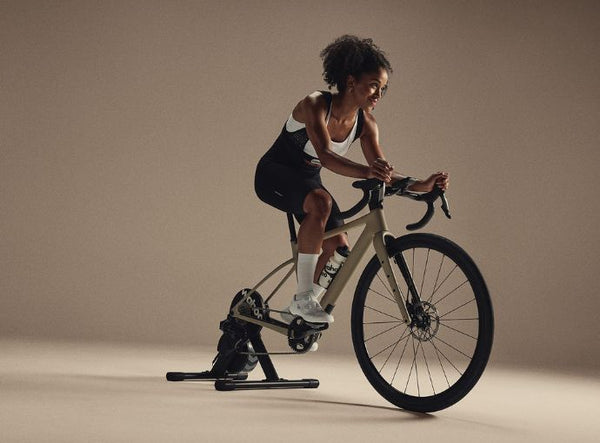
Comparison of trainers 2025
Share

COMPARATIVE GUIDE – Training Basics
Whether you're new to indoor training or ride year-round, this guide helps you choose the right model for your needs. We compare the essentials: power, simulated incline, accuracy, noise, connectivity (Bluetooth / ANT+ / Wi-Fi) and compatibility .
New features to know about: Zwift Cog & Click for virtual speeds and a simpler base to share at home.
How to choose the right training base
1) Objectives & volume
Endurance/fitness : silence, stability, smooth ERG mode.
Intervals/sprints : high maximum power and fast response.
Mountain/gravel : higher simulated slope and realistic inertia.
2) Accuracy & calibration
Aim for ±1 to ±2% accuracy when working on your zones. Auto-calibration or simple spin-down = regular use.
3) Comfort & noise
Direct-drive bases are quieter and protect the transmission.
4) Connectivity & ecosystem
Bluetooth FTMS, ANT+ FE-C, Wi-Fi : check your apps (Zwift, TrainerRoad…). Race Mode 10 Hz and heart rate bridge = better responsiveness.

Training bases: best value for money
Compare power , simulated slope , accuracy , calibration , connectivity , and axis compatibility .

Click on the image to enlarge
High-end training bases

Click on the image to enlarge
Find the basics
Tacx Neo 2T: SEE HERE · Wahoo KICKR V6: SEE HERE · Elite Justo 2: SEE HERE · NEW Elite Avanti: SEE HERE
Connected stationary bikes

Click on the image to enlarge
Find the bikes
Tacx Neo Bike Plus: SEE HERE · Wahoo KICKR Shift: SEE HERE · Wahoo KICKR Bike Pro: SEE HERE · Wahoo Zwift Ride + Core 2: SEE HERE

Zwift Cog & Click — what is it?
The Zwift Cog replaces the cassette with a single cog on the frame; the Zwift Click on the handlebars sends the virtual gear shifting to the app. The result: simplified setup, smoother effort transitions, reduced maintenance, and a frame that's easy to share at home.
Who is this for?
Beginners, multi-bike households, regular practitioners seeking silence and fluidity, studios/small spaces.
Compatibility
Road/gravel/mountain bikes with standard axles (QR 130/135, 12×142/148 depending on the frame). Not suitable for internally geared hubs.
How it works
The base adjusts the resistance to simulate the chosen ratio. In ERG mode, the app manages the target power.
Should we use Zwift?
Yes to the Cog & Click virtual gear shifting. Without Zwift: fixed gear or ERG; you can switch back to a classic cassette if needed.
FAQ — Training Basics
Direct drive or rollers : which one is right for you?
The right level : power and simulated slope to aim for?
ERG : What is it used for?
Apps : Is Zwift absolutely necessary?
Bike compatibility : Is my bike compatible?
To clarify : do I need to calibrate often?
Silence : what level of noise should be expected?
Practical choice : stationary bike or base + your own bike?
Still hesitating? Discover our video guide soon to help you choose your base, or contact our advisors — we'll help you decide.



